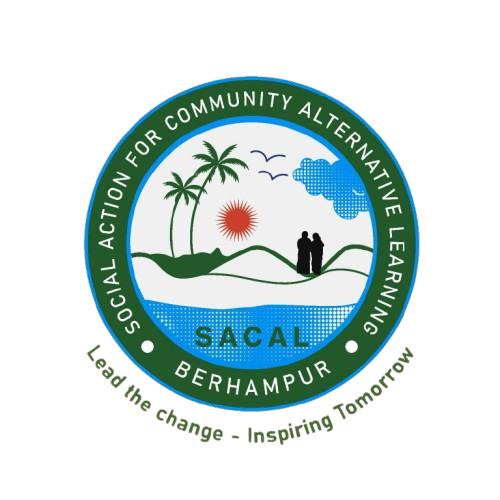Community Health, Nutrition, Sanitation and Hygiene
WELCOME TO SACAL
Community Health, Nutrition, Sanitation and Hygiene
Illiteracy, ignorance and geographic inaccessibility are three major contributors for low human development index in the tribal dominated districts. Primary education is the fundamental right of every children and it is the window for them to the outside world which ensure a better and enlightened life, increase their employability and ensure their access to services and a better citizen.
Better nutrition, water and sanitation contribute to a healthy community and consequently a socio-economically prosperous society. SACAL’s study has found that Gajapati and Ganjam regions are endemic to Malnutrition, Malaria, Tuberculosis and other preventable communicable diseases with varied cause and effect relationship. Ignorance, illiteracy and lack of awareness among the tribal people lead them to poor hygiene practises and ultimately fell prey to various communicable diseases. Worse still is their poverty and malnourishment, which further accentuate the condition.
Malaria is one of the major public health problems of the Gajapati Districts. Morbidity and mortality due to malaria still remain the major health concern especially among the children and pregnant mothers. Malarial fever affects the economy of households, especially the poor ones. It affects the productive activities of the poor as they fail to continue their work till long. Among children, particularly below five years of age, the symptoms are not easily identifiable. Hence, it causes hindrances in their growth. Besides, persistence of malaria hampers the education of children. A part from acute persistence with potentially life threatening complications with all, pregnant women are at greater risk as the disease can cause anemia, abortions and stillbirths.
There is a tendency in the rural areas not to seek medical attention in case of suspected cases of malaria mostly due to poverty, Ignorance, lethargy and illiteracy. Under the National Vector Borne Disease Control Programme high priorities have been accorded to prevention and control strategies in terms of reduction in risk factors, promotion of personal protection and biological vector control measures and improvement in accessibility to treatment. Besides, several programmes both at the Govt. as well as the non-Govt. level have been undertaken for control of malaria. But success has been limited due to less community participation.
An educated and empowered community will take care of their health and nutrition in a better way than their counterparts. Under this premise SACAL implements an empowerment based health and nutrition programme in 60 villages in Mohana block since 2012. All the community based organisations are brought under the fold to empower, educate and own health and nutrition programme in their localities.
The programme introduced many innovative approaches to bring about health, education and nutrition scenario in the locality. Food fairs and Seed Fairs are two of the effective events organised at the GP level spreading the knowledge of nutritional values of local foods. Our sincere effort in the direction has resulted in revival of local foods that is being observed across our operational villages.
Baby Shows organised at the cluster and GP level encourage parents to follow healthy and nutritious food for their children, timely immunization and health checkups. Parents in inaccessible areas trek miles to get their children immunised and vaccinated timely, a positive indicator among the illiterate tribal populations. Changes in practice of the people are seen in ensuring personal hygiene among children, ensuring regular weighing of children below five years, cooking of millet recipes. Among the activities that resonated with the community most are the kitchen garden promotion (both community and individual levels), cooking of millet based recipes in promoting nutrition, health camps.
There is an increased knowledge level on safe motherhood, adolescent health, and child care, nutrition among children, mothers and adolescents not only among the health professionals but also among the common masses. Regular trainings for ASHA, ANM and AWW and follow up activities with the health workers could result in greater accountability and responsibility. Further, the alert community demand services, their rights and entitlements; the community based organisations monitor activities of health professionals, participate in review meetings and raise their voice in cases of breach of services. That significantly contributed to better service delivery among rural health and nutrition professionals.

WELCOME TO SACAL
IMPACT
At the community level, programme helped in enhancing the knowledge and skill of the community as far as health, nutrition, water and sanitation is concerned. They know the symptoms of malaria, how does it spread, what to do if one gets malaria, and what can they do to prevent its occurrence. At the practice level, they are practicing personal protection measures to protect themselves from the mosquito bites. VHV at every village support the villagers to deal with malaria and tuberculosis. Further, the community members found a diagnostic centre in their own village, a health counsellor within their reach to address critical health needs.
Increased access to services of ASHA, AWW and health workers is noticeable. Govt. has also recruited ASHA at every Angawardi level. The programme has also helped to enhance the skills of ASHA. VHVs are working with ASHA very closely and there is an exchange of skills.
The project ensured that not a single malaria, tuberculosis patient go unnoticed in its operational villages. The initiative took malaria and TB diagnosis at the village level on a mission mode. Children, adolescents, women and men, all made aware about the symptoms of various common ailments endemic to the region so that the diagnosis equipment and technology kept at the village level for early detection could be timely utilised.

